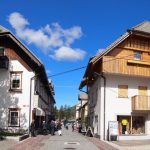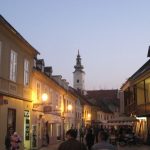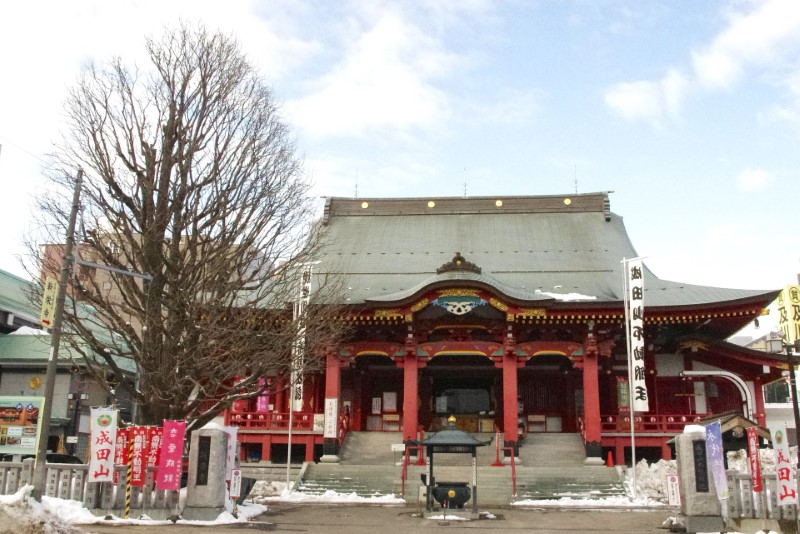Table of Contents
The city of Rome in Italy, with an interesting history that spans centuries, boasts of such a vast territory that it will surely take a lifetime for you to unearth, discover, and explore its almost infinite selection of monuments and sights.
Although many of the top attractions in the city are popular and part of the bucket list of every traveler, the Eternal City still got its own share of hidden gems that are even unknown to the locals themselves.
Read on and get a glimpse of some of the most intriguing secret places in the city to give you a chance to look at the capital from a different perspective:
Antica Farmacia della Scala
The quaint ivy-ladden piazza of Piazza della Scala is located in the bustling neighborhood of Trastevere and is renowned for its trattorias and cafes. However, this serves as the home to one real treasure. Farmacia Santa Maria della Scala is a pharmacy constructed into the nearby church’s cloister.

While you can get modern medicines here, you can expect to travel back to the 17th century once you visit its upper floor back in the days when it served as Papal Court’s pharmacy. The Carmelite monks still run the place and they will serve as your guide as you wander around the evocative space and its abundance of hand-labeled bottles, painted vases, and frescoed ceilings.
Casina delle Civette
The whimsical house-museum of Casina delle Civette is nestled in Villa Torlonia Park. Giuseppe Valadier, the neoclassical architect, was the man behind the park’s design that served as the home to the noble family Torlonia and is renowned as Mussolini’s state residence starting from the 1920s and beyond.

There are several interesting museums in the park but there is no doubt that the House of the Owls or the Casina delle Civette is the most unusual one. This was constructed to mimic a Swiss cabin featuring stained glass windows with animal figures, various turrets, porticos, and loggias.
Chiesa di Dio Padre Misericordioso
Richer Meier, the American starchitect, has left his unique imprint in Rome and this was in the form of two modern buildings. First is the more popular Ara Pacis museum that contains the Altar of Peace aged 2,000 years old and the usually overlooked Jubilee Church in the eastern neighborhood of Tor Tre Teste.

Constructed between years 1996 to 2003, this contemporary church is unusual in the sense that this was designed to look like a ship with its three curved walls complete with skylights to allow the space to be flooded with light. This church was commissioned as a part of the Millennium project of Pope John Paul II that marked the Jubilee of 2000.
Domus Aurea
The Golden House of Emperor Nero is a stunning archeological site that was opened to the general public not too long ago for guided weekend tours to help in funding the ancient villa’s ongoing renovations.
This expansive palace has a history that dates as far back as 64 AD and was constructed after a big part of the city was brought to the ground because of a great fire. This extended through many of the popular Seven Hills of Rome that include the Caelian, Oppian, Esquiline, and Palatine hills containing up around 300 rooms.
The palace was covered in precious stones, gold leaf, frescoes, and stucco that make it one of the most notable palaces ever constructed in history.
Fondazione Pastificio Cerere
Pastificio Cerere, located in San Lorenzo, is an aged factory for pasta production of the city for more than 50 years. Name after Ceres, the goddess of fertility, the factory was established in 1905 that played a big role in feeding the capital during World Wars I and II.
The production stopped in the 1960s and after 10 years, the factory once again opened its doors as multifunctional artist space. Today, it serves as the home to design and artist studios, galleries, a photography school, and artist ateliers. The acclaimed Pastificio San Lorenzo restaurant is located on the lower level.
Palazzo Farnese
The stunning Piazza Farnese as well as its namesake Palazzo Farnese can be found just behind the tourist-filled Campo de’ Fiori. Palazzo Farnese houses the French Embassy in the city and is among the most significant High Renaissance villas in the entire area.

This was designed for the prominent Farnese family during the early 16th century and features some important works of art such as the elaborate ceiling fresco The Loves of the Gods by Annibale Carracci.
Piccola Londra
Found in the northern neighborhood of Flaminio, the small residential Via Bernardo Celentano street is truly a gem that is off the beaten path. With its row of multicolored houses of Liberty-style that features fences and private gardens, the place looks more like a little version of London instead of an alley in Rome.
The architect Quadrio Pirani designed the street during the early 20th century in the time of Mayor Ernesto Nathan who envisioned the city as a proper metropolis in Europe. While the urban project wasn’t able to spread beyond the tiny street, it was preserved really well and remains to be one of the best-kept secrets of the city.
Pozzo Corridor at St. Ignatius
The mother church of Society of Jesus, Church of the Gesu boasts of ceilings with striking trompe l’oeil effects. However, a more peculiar visual effect remains hidden in the Rooms of St. Ignatius next door. Andrea Pozzo, a Baroque painter, decorated the elaborate Pozzo Corridor that took inspiration from the Galleria Colonna in the nearby Palazzo Colonna featuring scenes of St. Ignatius’ life.

This is fascinating since the corridor itself was relatively tucked away and creates the impression that it was longer due to the slanted way it was painted. This why the figures become distorted when you approach them and look stretched if you look at them up close.
The vastness of Rome, both in terms of size and history, is the reason why some of its hidden treasures remain hidden to this day.








